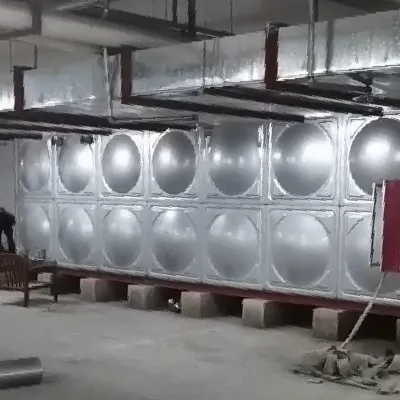loading...
- No. 9, Xingyuan South Street, Dongwaihuan Road, Zaoqiang County, Hengshui, Hebei, China
- admin@zjcomposites.com
- +86 15097380338
- Welcome to visit our website!
GRP Grating Specifications | Durable and Versatile GRP Solutions
Understanding GRP Grating Specifications
GRP (Glass Reinforced Plastic) grating has emerged as a superior alternative to traditional materials due to its unique properties, making it a popular choice in various industries. The specification of GRP grating encompasses a range of considerations that ensure its performance, durability, and safety.
Composition and Manufacturing
GRP grating is typically made from a combination of fiberglass and resin, providing a lightweight yet robust structure. The resin used can vary, with options such as polyester, vinyl ester, or epoxy, each offering different benefits like corrosion resistance or enhanced durability. The manufacturing process involves the pultrusion method, where glass fibers are pulled through a resin bath and then cured, forming a solid and uniform product.
Load-Bearing Capacity
One of the critical factors in GRP grating specifications is its load-bearing capacity. This is determined by the grating's thickness, span, and the type of load it’s designed to support. The specification typically includes information on the allowable deflection and safety factors, ensuring that the grating can withstand dynamic and static loads. It is essential to refer to standardized load tables provided by manufacturers to select the appropriate grating for specific applications, such as walkways, platforms, and other structures that may experience foot or vehicular traffic.
Chemical Resistance
grp grating specification

GRP grating is well-regarded for its resistance to a wide range of chemicals, making it ideal for environments such as chemical plants, wastewater treatment facilities, and food processing plants. The specification should detail the chemical compatibility of the chosen resin type, allowing engineers and designers to assess whether the grating will perform effectively in their operational environment.
Fire Resistance and Safety Standards
Safety is paramount in the selection of materials for construction, and GRP grating adheres to several fire codes and safety standards. Various GRP grating products come with Class 1 fire ratings, indicating their ability to withstand fire exposure without contributing to flame spread. Additionally, specifications will often include slip resistance ratings, which are crucial for ensuring safety in wet or slippery conditions.
Environmental Considerations
In an era increasingly focused on sustainability, GRP grating specifications often highlight the environmental benefits of using fiberglass products. They are fully recyclable and have a long service life, reducing the need for frequent replacements and maintenance. Furthermore, the manufacturing process now increasingly incorporates eco-friendly practices that minimize waste and energy consumption.
Conclusion
In conclusion, understanding GRP grating specifications is essential for engineers, architects, and procurement professionals. The careful consideration of load-bearing capacity, chemical resistance, fire safety, and environmental impact ensures that the selected grating will meet the demands of the intended application. As industries continue to seek durable, reliable, and sustainable solutions, GRP grating stands out as a preferred option in modern construction and infrastructure projects.
-
GRP Structures: The Future of Lightweight, High-Performance EngineeringNewsJun.20,2025
-
FRP Water Tank: High-Performance Storage for Corrosive and Clean Water SystemsNewsJun.20,2025
-
FRP Square Tube: The New Industry Standard for Chemical and Structural ApplicationsNewsJun.20,2025
-
FRP Pultruded Profiles: The Ultimate Choice for Lightweight Structural StrengthNewsJun.20,2025
-
FRP Handrails: The Safer, Smarter, and Stronger Choice for Modern InfrastructureNewsJun.20,2025
-
FRP Grating: The Smart Solution for Durable, Lightweight Industrial FlooringNewsJun.20,2025
-
Why Choose a Galvanized Water Tank for Your Storage NeedsNewsMay.21,2025
